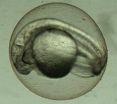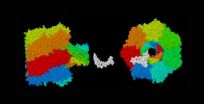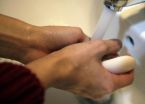(Press-News.org) JUPITER, FL, November 8, 2012 – Scientists from the Florida campus of The Scripps Research Institute (TSRI) have defined the molecular structure of an enzyme as it interacts with several proteins involved in outcomes that can influence neurodegenerative disease and insulin resistance. The enzymes in question, which play a critical role in nerve cell (neuron) survival, are among the most prized targets for drugs to treat brain disorders such as Parkinson's disease, Alzheimer's disease and amyotrophic lateral sclerosis (ALS).
The study was published online ahead of print on November 8, 2012, by the journal Structure.
The new study reveals the structure of a class of enzymes called c-jun-N-terminal kinases (JNK) when bound to three peptides from different protein families; JNK is an important contributor to stress-induced apoptosis (cell death), and several studies in animal models have shown that JNK inhibition protects against neurodegeneration.
"Our findings have long-range implications for drug discovery," said TSRI Professor Philip LoGrasso, who, along with TSRI Associate Professor Kendall Nettles, led the study. "Knowing the structure of JNK bound to these proteins will allow us to make novel substrate competitive inhibitors for this enzyme with even greater specificity and hopefully less toxicity."
The scientists used what they called structure class analysis, looking at groups of structures, which revealed subtle differences not apparent looking at them individually.
"From a structural point of view, these different proteins appear to be very similar, but the biochemistry shows that the results of their binding to JNK were very different," he said.
LoGrasso and his colleagues were responsible for creating and solving the crystal structures of the three peptides (JIP1, SAB, and ATF-2) with JNK3 using a technique called x-ray crystallography, while Nettles handled much of the data analysis.
All three peptides have important effects, LoGrasso said, inducing two distinct inhibitory mechanisms—one where the peptide caused the activation loop to bind directly in the ATP pocket, and another with allosteric control (that is, using a location on the protein other than the active site). Because JNK signaling needs to be tightly controlled, even small changes in it can alter a cell's fate.
"Solving the crystal structures of these three bound peptides gives us a clearer idea of how we can block each of these mechanisms related to cell death and survival," LoGrasso said. "You have to know their structure to know how to deal with them."
INFORMATION:
The first authors of the study, "Structural Mechanisms of Allostery and Autoinhibition in JNK Family Kinases," which will appear in the December 5, 2012 print edition of Structure, are John D. Laughlin and Jerome C. Nwachukwu of TSRI. Other authors include Mariana Figuera-Losada and Lisa Cherry, also of TSRI.
The study was supported by the National Institutes of Health (grant number NS057153).
Scientists reveal key protein interactions involved in neurodegenerative disease
2012-11-08
ELSE PRESS RELEASES FROM THIS DATE:
Unique spinal nerve cell activity discovery announced by University of Leicester biologists
2012-11-08
Scientists from the University of Leicester have hit upon unique forms of spinal nerve activity that shape output of nerve cell networks controlling motor behaviours.
The breakthrough in the Department of Biology at the University of Leicester is announced today (5pm GMT on Thursday Nov 8) in the journal Current Biology. The three- year study was funded by the Biotechnology and Biological Sciences Research Council (BBSRC).
Although the neural basis of motor control has been studied for over a century, the processes controlling maturation of locomotor behaviours – like ...
Rethinking body mass index for assessing cancer risk
2012-11-08
November 8, 2012 — (Bronx, NY) — A study by researchers at Albert Einstein College of Medicine of Yeshiva University suggests that body mass index (BMI)—the most commonly used weight-for-height formula for estimating fatness—may not be the best measure for estimating disease risk, and particularly the risk of certain types of cancer. The study was published today in the online edition of the American Journal of Epidemiology.
BMI is calculated by dividing a person's weight (in kilograms) by his or her height in meters squared, or W/H2. Most of the early studies that ...
Cells from skin create model of blinding eye disease
2012-11-08
MADISON — For the first time, Wisconsin researchers have taken skin from patients and, using induced pluripotent stem cell (iPSC) technology, turned them into a laboratory model for an inherited type of macular degeneration.
Dr. David Gamm, director of the UW's McPherson Eye Research Institute, said that while Best disease is relatively rare, having a patient-specific model of the eye disease, which destroys the macula of the retina, could lead to a greater understanding of more common eye disorders such as age-related macular degeneration.
"This model gives us a chance ...
Dream symbols could help in psychotherapy
2012-11-08
Dream images could provide insights into people's mental health problems and may help with their treatment, according to a psychology researcher from the University of Adelaide.
Dr Lance Storm, a Visiting Research Fellow with the University of Adelaide's School of Psychology, has been studying dream symbols (or "archetypes") and their meanings, as described by the famous psychologist and psychiatrist, Carl Jung.
In the early 1900s, Jung proposed that these archetypes were ancient images stemming from humans' collective unconscious. He believed that dream symbols carried ...
Injection is the best method for cutting ammonia emissions from slurry spreading on lands
2012-11-08
In order to contribute to the development of the primary sector and environmental care, the Basque Institute of Agricultural Research and Development, NEIKER-Tecnalia, has analysed various ways of spreading slurry on arable land to determine the most appropriate way of cutting the amount of ammonia that is released into the atmosphere.
The three methods studied were: the traditional splash plate or fan method, hanging pipes, or injection. The last one turned out to be the most environmentally friendly in terms of ammonia emissions (NH3), as it achieves a 93% cut in NH3 ...
Carbon dioxide – our salvation from a future ice age?
2012-11-08
Mankind's emissions of fossil carbon and the resulting increase in temperature could prove to be our salvation from the next ice age. According to new research from the University of Gothenburg, Sweden, the current increase in the extent of peatland is having the opposite effect.
"We are probably entering a new ice age right now. However, we're not noticing it due to the effects of carbon dioxide", says researcher Professor Lars Franzén.
Looking back over the past three million years, the earth has experienced at least 30 periods of ice age, known as ice age pulses. ...
Pull with caution
2012-11-08
As nanotechnology progresses, it becomes increasingly important to know in detail the dynamics of the nanoworld (the world at the scale of a millionth of a millimeter). What happens, for example, when we try to drive a polyelectrolyte (a long chain of electrically charged molecules, such as DNA) through a nanopore if knots cause the translocation process to jam? It's not a pointless question, because now a new DNA sequencing method to electrochemically analyze every single strand by driving it through a nanopore, is being developed. Since those strands tend to tangle up ...
Environmentally friendly chemistry important for manufacturing pharmaceuticals
2012-11-08
Limiting the quantity of catalysts – substances that trigger a chemical reaction – used in the manufacture of pharmaceuticals is important, and research from the University of Gothenburg, Sweden, has now demonstrated that small quantities of copper work well in this respect.
"This is an important finding, not just academically but also for industry," says chemist Per-Fredrik Larsson.
Catalysis is an incredibly valuable tool in the field of chemistry, with the Haber-Bosch process being one of the most important catalytic processes in the world. It is used to manufacture ...
What if the nanoworld slides
2012-11-08
A study published by Andrea Vanossi, Nicola Manini and Erio Tosatti - three SISSA researchers - in PNAS (Proceedings of the National Academy of Sciences) provides a new tool to better understand how sliding friction works in nanotribology, through colloidal crystals.
By theoretically studying these systems of charged microparticles, researchers are able to analyze friction forces through molecular dynamics simulations with accuracy never experienced before.
"There are several and very concrete potentialities", stated Andrea Vanossi, one of the members of the research ...
The brain of OCD sufferers is more active when faced with a moral dilemma
2012-11-08
Patients with obsessive-compulsive disorder are characterised by persistent thoughts and repetitive behaviours. A new study reveals that sufferers worry considerably more than the general population in the face of morality problems.
Along with the help of experts from the Barcelona's Hospital del Mar and the University of Melbourne (Australia), researchers at the Hospital de Bellvitge in Barcelona have proven that patients with obsessive-compulsive disorder, known as OCD, are more morally sensitive.
"Faced with a problem of this type, people suffering from this type ...





